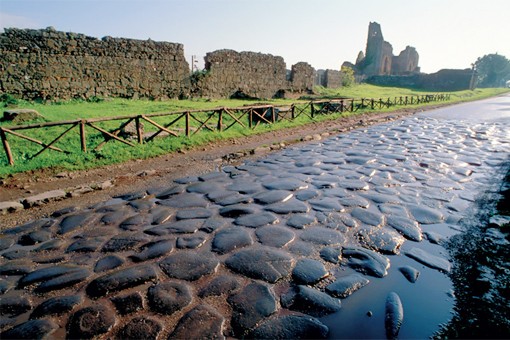 Roman ruins, baroque palaces and celebrated shops – historic Rome has three millennia of sights to explore. Step outside your Rome hotel with this guide to see the best of the city’s significant sights.
Roman ruins, baroque palaces and celebrated shops – historic Rome has three millennia of sights to explore. Step outside your Rome hotel with this guide to see the best of the city’s significant sights.A walk through the grass-covered ruins on the Palatine Hill, overlooking the Roman Forum, conjures up the glory of ancient Rome. Emperors built their palaces here, but the ruins give only a hint of their former grandeur. The 16th-century Farnese Gardens are especially memorable in spring.
Thought to be a manhole cover, the bizarre Mouth of Truth (La Bocca della Verità) sculpture is in Santa Maria in Cosmedin church, west of the Roman Forum. Dare to put your hand in the ancient sculpture’s mouth – according to legend, you’ll lose it if you tell a lie – for a classic “when in Rome” photo opportunity.
Piazza della Bocca della Verità
Imperial Romans were buried in elaborate mausoleums lining the Appian Way, south-east of the city walls. Follow the tomb-lined road on a Sunday, when it’s free of traffic, to visit the underground catacombs where Rome’s early Christians were buried.
In the south-east of the city, Rome’s oldest basilica is also the city’s cathedral. For Roman Catholics it outshines St Peter’s in importance. Dating back to the fourth century, there are marble mosaic floors, Roman bronze doors, Papal tombs and 13th-century cloisters to admire.
Piazza di San Giovanni in Laterano
This former coach house south of Piazza del Popolo dating back to 1870 has been transformed into an enoteca (wine bar). Surrounded by brick arches, wrought-iron chandeliers, century-old furnishings and wooden shelves groaning with wine bottles, it’s an atmospheric den for a tasting of local wines.
Via di Ripetta 19/20
For decoration with a difference, drop into the church of Santa Maria della Concezione on the Via Veneto to see the extraordinary Capuchin Crypt. The decor is rococo but the detail is made up of thousands of bones of dead Capuchin monks, used for interior decoration between the 16th and 19th centuries.
Via Veneto 27
Near the Pantheon, Stilo Fetti is a haven for lovers of fine stationery. One of the oldest continually operating shops in Rome, in business since 1893, the pen shop has kept its original display windows to exhibit its collection of antique and modern fountain pens – the ultimate Rome souvenir.
Via degli Orfani 82
Flanking the Spanish Steps, Keats-Shelley House is a magnet for lovers of Romantic poetry. English poet John Keats died here in 1821, and the 19th-century decor brings the era to life. The museum’s collection of memorabilia relating to Keats, Shelley and Byron is a fascinating browse.
Piazza di Spagna
In the southern part of the historic centre, north of the River Tiber, the Ghetto area is a particularly timeless part of Rome to wander and enjoy an authentic lunch. Visit the Jewish Museum to learn the history of one of Europe’s oldest Jewish ghettos, established here in 1555.
To experience life as an aristocrat, take a turn around the Doria Pamphilj Gallery, on Via del Corso in Rome’s historic centre. Not only do you get to stroll through the Pamphilj family’s 15th-century home, but you also have access to one of Rome’s best private art collections.
Via del Corso 305